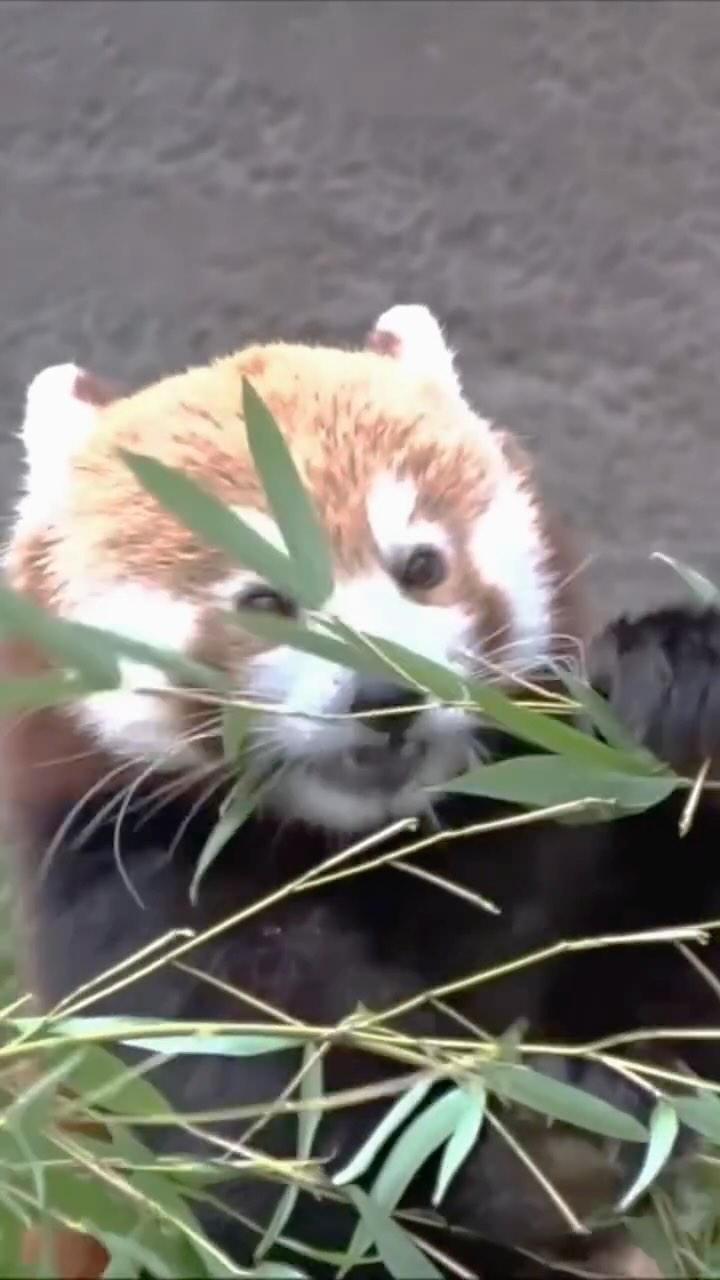– Unraveling the dietary marvels of the red panda, Ginger
– Exploring the extraordinary daily consumption of bamboo by red pandas
– Understanding the red panda’s unique adaptations for feeding
– Investigating the crucial role of bamboo in red panda ecology
– Appreciating the delicate balance of red panda diets in habitat conservation
Embarking on an odyssey to discover the quirks of nature’s buffet, we often stumble upon fascinating tales woven into the dietary habits of the world’s wildlife. An animal’s menu occasionally offers a glimpse into the delicate tapestry of ecological interdependence. Among the most enchanting of such creatures is the red panda, an understated yet captivating species whose epicurean delight centers on one of the most prolific plants on the planet: bamboo.
Picture this: a charismatic creature draped in a coat of rich russet fur meanders through a dense forest of towering bamboo. Ginger—a fitting moniker hinting at the fiery hue of its coat—embarks on a daily gastronomic journey, munching away with a voracity that belies its diminutive size. Red pandas, such as Ginger, can consume an astonishing 20 to 30 percent of their body weight each day, translating into a staggering sum of nearly 20,000 bamboo leaves.
This seemingly inexhaustible appetite for bamboo is not merely a peculiar preference but a critical survival strategy. Red pandas have robust, flat molars and strong jaw muscles that aptly grind the fibrous bamboo. Unique among most animals, their thumb— an extended wrist bone—gives them a firm grasp on stalks as they feast.
Yet, for all its abundance, bamboo presents a nutritional paradox; it’s replete with cellulose, a component many mammals find difficult to digest. How, then, does the red panda thrive on such a diet? Enter the red panda’s enigmatic gut. Inside, a world of microbes works tirelessly, breaking down cellulose and extracting essential nutrients—a testament to the marvel of evolutionary resourcefulness.
Exploring Ginger’s bamboo-eating habits reveals an intricate interplay with its habitat. Bamboo thrives across the red panda’s native mountainous forests in the Himalayas and southwestern China, offering sustenance and sanctuary. The dense thickets of bamboo serve as a fortification from predators and as a nursery for the younger members of the species.
While our fluffy protagonist’s dietary needs might appear simple, the conservation implications are anything but. Bamboo—integral to the red panda’s existence—faces deforestation, overgrazing, and climate change threats. Thus, protecting Ginger’s leafy larder means safeguarding a vast ecosphere, from towering trees to the microscopic flora in the soil.
Ponder for a moment the labor involved in red pandas’ foraging. While they feast for most of the daylight hours, studies suggest they select leaves with higher nutrient content, displaying an almost connoisseur-like attitude towards their bamboo buffet. This behavior underscores the fine balance of their diet—too little nutrient intake, the red panda risks malnutrition, too much exertion in foraging, and the energy budget topples.
Remarkably, the sustainability of Ginger’s lifestyle hinges upon a phenomenon known as “pseudo-ruminant” digestion. Although not true, ruminants like cows or deer and red pandas exhibit a slowed digestion that allows more time for their gut fauna to ferment and break down the cell walls of bamboo. This protracted digestive process is a boon, enabling them to exist on a resource that, for many animals, would be a dietary dead end.
Consider also the rhythm of bamboo. Its growth trajectory is marked by sporadic flowering events, followed by a die-off that can span regions and last for several years. Such cycles can pose a serious challenge for red pandas, as an entire food source temporarily vanishes. Despite that hurdle, these creatures have shown remarkable resilience, switching to alternative food sources when necessary, including berries, leaves, and even the occasional insect or bird egg.
Beyond the interplay of diet and survival, Ginger’s eating habits offer a compelling story of coexistence and reliance. Just as the red panda depends on the bamboo forest, so does the forest benefit from its residents. The red pandas serve as seed dispersers and act as ecological indicators, their well-being reflecting the health of their environment. In essence, saving the red panda is synonymous with preserving the rich biodiversity of its habitat.
As we close this chapter of Ginger’s culinary escapade, it’s clear that the story is more than a tale of endless eating. It serves as an allegory for biodiversity, ecology, and conservation. The story of the red panda teaches us the importance of each organism’s niche and their contribution to the complex web of life—a message that, if heeded, can steer us toward a more harmonious relationship with the natural world.
In closing, while our journey through the dining dynamics of the red panda has spanned thousands of words, it is merely an appetizer to the full banquet of knowledge this small yet magnificent animal brings to the world. Through the lens of Ginger’s voracious appetite for bamboo, we’ve ventured into a biological ballet of near-mythic proportion, choreographed by the forces of evolution and shaped by the environment.
As stewards of the planet, we must ensure that this mesmerizing spectacle—along with the myriad of other natural wonders—continues to enchant future generations. So, let us step back from Ginger’s bamboo enclave with a renewed commitment to conserving such extraordinary wildlife and their habitats. May we always find inspiration in the endless stories that unfold under the canopy of Earth’s grand, living theater.
By attending to these narratives with care and respect—acting where we must protect and preserve—we honor the delicate balance to which the red panda, Ginger, and all life are inextricably bound. After all, the grandeur of the natural world thrives not only in the spectacle of the Serengeti or the depths of the ocean but in the quiet, persistent nomming of a red panda perched in a bamboo grove.
*****
Source Description
Nom, nom, nom – Ginger has quite the appetite.
Red pandas eat 20 to 30 percent of their body weight daily–equaling almost 20,000 bamboo leaves!
🎥 Patti Truesdell.


